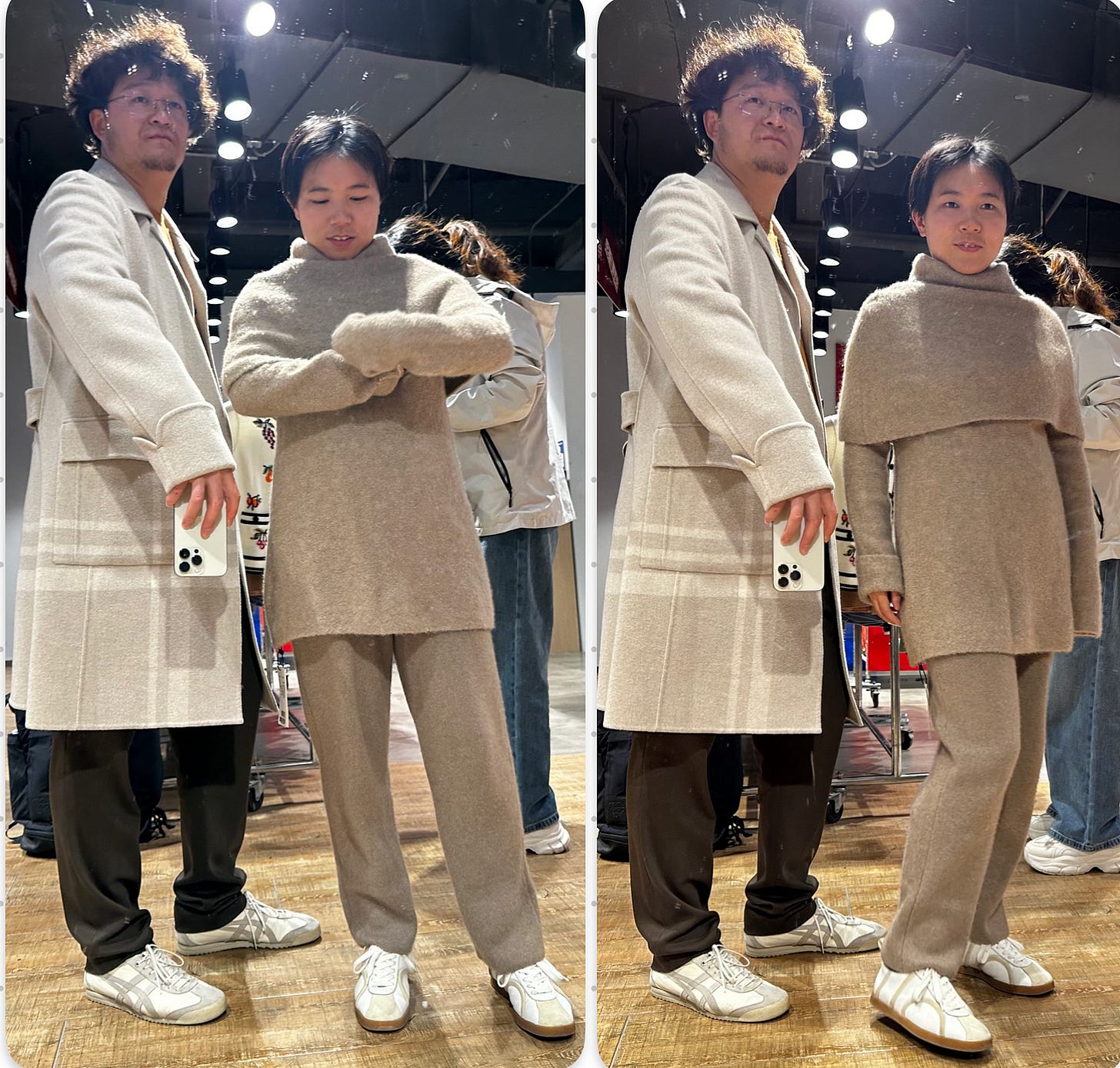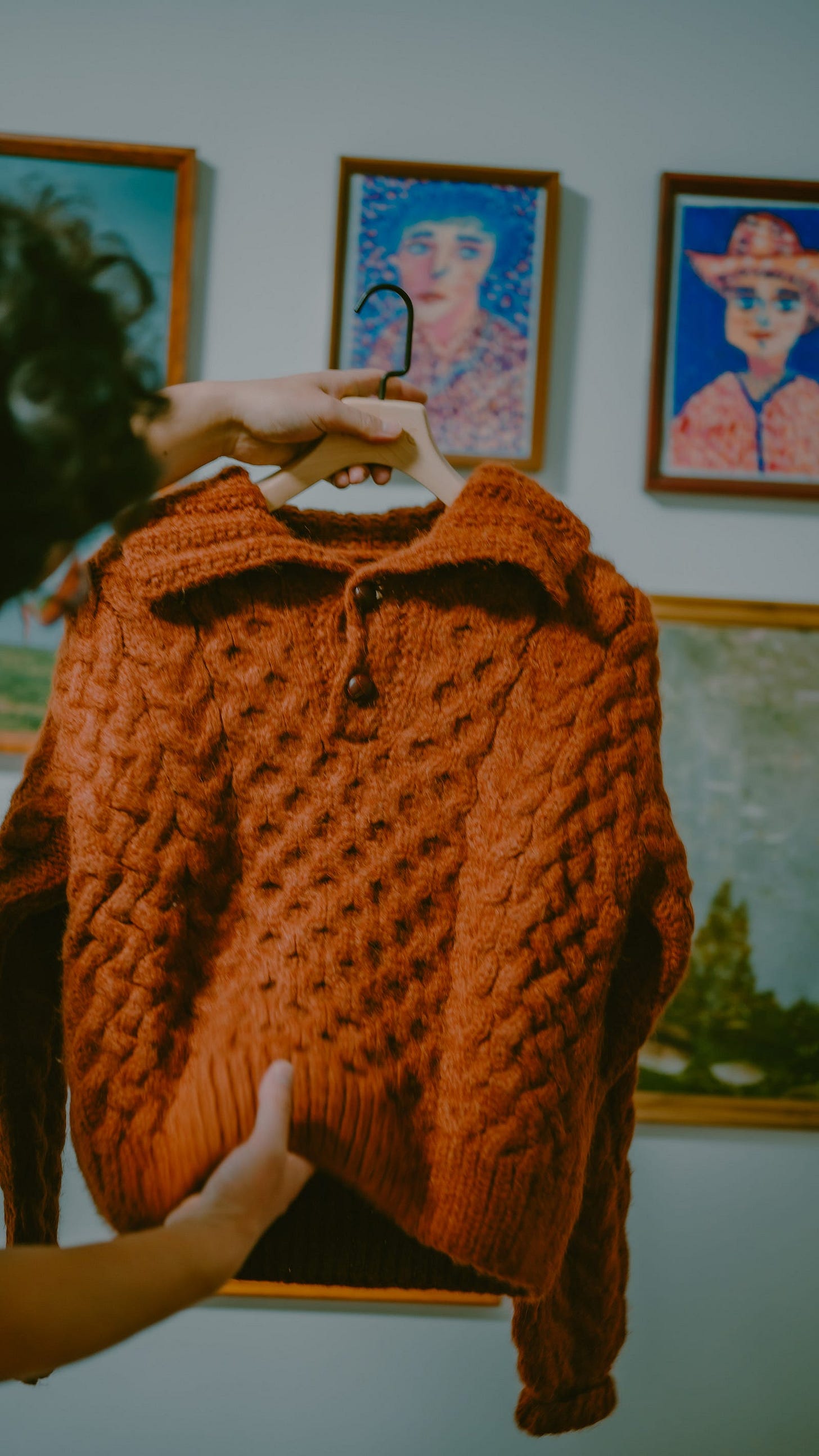DÔEN | Purchased a Handcrafted Baby Alpaca Sweater from Peru, A California Niche Brand with a South of France Vibe
During the anniversary sale at the Badaling Outlet SKP Select, I stumbled upon a hidden gem of a brand — DÔEN. After spending over two hours browsing two floors, I found this unfamiliar brand and managed to score their heaviest (750g) and most expensive baby alpaca sweater at 50% off.
In this post, I’ll introduce the DÔEN brand, explain the differences between 70% cashmere/alpaca blends and pure cashmere, and share details about this beautiful cinnamon-colored sweater I bought. It’s been a while since I’ve come across such an exceptional piece.
DÔEN
Founded in 2016 by the Kleveland sisters, Margaret and Katherine, who were born in Santa Barbara, California, DÔEN draws inspiration from the 90s coastal California vintage aesthetic. Picture the sunny Mediterranean climate, where the Pacific Ocean glimmers under the bright sunlight, and the vast sea brings a sense of calm. On the shore, cattle and sheep graze freely among oak trees and orchards, while the sun turns the ground golden.
The core team is entirely female, with each member having a stake in the company. This focus on women’s welfare and the fact that they are not overly capital-driven sets them apart. Their manufacturing facility in Peru prioritizes the well-being of female employees. Since 2020, DÔEN has partnered with suppliers to ensure that employee welfare and long-term development are part of the brand’s core values.
“This deeply held supplier-brand relationship is a further articulation of our mission: The partnership empowers women in our supply chain with ownership; values craft and people by joining forces rather than replicating an extractive, exploitative relationship; and encourages long-term thinking.”
DÔEN’s sales are primarily online, and their website design reflects their cultural ethos. The team’s philosophy is to ensure that customers experience the brand’s culture, story, and atmosphere while shopping online. The imagery on the site differs from typical e-commerce product shots, featuring grainy, everyday photos that add an element of artistic ambiguity to the shopping experience.
Their online presence is mainly on their website, shopdoen.com, along with Net-A-Porter and Saks Fifth Avenue. However, the styles on Net-A-Porter tend to be a bit outdated, so I recommend shopping directly on their website, especially during Black Friday sales when prices tend to be lower than at Saks.
As shown in the image above, DÔEN’s most iconic products are their dresses, followed by knitwear. On their website, you’ll see the dress category first, then knitwear; these are their most popular items. Many shoppers from Shanghai also target these categories.
DÔEN’s dresses are known for puff sleeves, ruffles, floral prints, and lace, all exuding a South of France vibe. The fabrics are mainly cotton, with some linen and mulberry silk options.
For the knitwear collection, I recommend focusing on alpaca and cashmere. Be cautious with recycled cashmere, which is marketed as eco-friendly but is often a cost-cutting measure. Some of their knitwear is 100% cashmere, while others are cashmere blends, but nearly all cashmere items are made in China, as many niche brands source cashmere from Inner Mongolia, where the supply is abundant.
While researching, I found some Taobao stores offering DÔEN’s original pieces (like YUS SHOP, specializing in high-quality women’s clothing) and knockoffs of DÔEN and Sézane (like mimi made), so it’s essential to verify authenticity. In general, it’s worth being cautious with small to mid-range brand cashmere unless the design is truly exceptional — something that’s hard to replicate locally.
DÔEN’s heavy-duty knitwear is mostly handcrafted in Peru, with each artisan hand-signing their name on the garment.
For example, my sweater bears the name “Leonor,” the artisan who made it. This personal touch reminds me of the Estonian brand Longing for Sleep, which I mentioned in my previous post, Top 30 Niche Luxury Cashmere Brands from Lane Crawford. Like DÔEN, their items are hand-signed by the maker, and the founders are also women. It seems that women, especially mothers, bring a gentle warmth to their craft — Margaret and Katherine Kleveland founded DÔEN after becoming mothers, much like Gabriela Hearst whose children often influence her designs.
In addition to dresses and knitwear, DÔEN also offers wool blazers, shoes, jeans, and tops, though these categories are less prominent. I personally love this 100% silk blouse — the sleeves are almost tantalizingly sheer, like a glass of milk.
Baby Alpaca Sweater
This is my first time buying something made in Peru and my first alpaca item. While it’s made from Huacaya alpaca (not the finer Suri alpaca), the baby alpaca fibers are soft, second only to royal alpaca. It’s a pleasant surprise. When worn next to the skin, it doesn’t feel scratchy — baby alpaca fibers are about 18 microns in diameter, while the human skin generally only perceives scratchiness at fiber diameters over 20 microns. For comparison, mulberry silk is around 4 microns, and baby cashmere is 13–14 microns.
The composition of my DÔEN sweater is 70% baby alpaca, 7% wool, and 23% nylon. Last week, I also tried a collaboration between Ruohan and Erdos on a cape-style knit, which similarly had around 30% synthetic fibers. The top and cape were attached, and on the left was an Erdos men’s coat that didn’t fit well. I tried medium-length coats from Erdos, ICICLE, and 1436, but none of them had a great fit. However, their short jackets and coats were much better.
I also compared the feel of 100% alpaca sweaters. Those with synthetic fibers were lighter and fluffier (the name of this DÔEN sweater color is “nuage cinnamon,” where “nuage” means cloud in French — such an accurate description, as it looks rich and luxurious). In contrast, 100% pure cashmere or alpaca sweaters feel heavier and denser.
Before, I thought that cashmere or alpaca garments needed to be at least 90% pure, but after trying both the Ruohan x Erdos and DÔEN sweaters with 70% content, I’m now open to both. Garments with 70% cashmere or alpaca allow for more fashion-forward designs, creating a cloud-like, fluffy effect (Erdos’ 2024 men’s collection has a white sweater made from a similar material — very light and cloud-like, as shown in my left hand below). Pure cashmere, on the other hand, feels denser, like the gray sweater I’m holding in my right hand.
Below is a cardigan from the French brand Sézane, which is 55% alpaca, 15% wool, and 30% polyamide. You can see it has a similar lightness. Sézane offers many beautiful knitwear pieces, but their materials are not as good as DÔEN’s, which is why their prices are about half as much.
From what I saw on the DÔEN website, my sweater is their heaviest and most intricate knitwear. The one I bought is an older model from the SKP-Select outlet, while this year’s version is a blue cardigan made from the same material, originally priced around $500 (but already sold out). It also has a chunky, thick-knit style.
When I tried it on, I hung the sweater on a hanger and accidentally hooked it onto the thin metal hanger — since the knit has large holes, it took me a minute to carefully unhook it. That said, the open-knit style isn’t very windproof. In Beijing’s 2–15°C weather, especially when biking during the day, the wind goes right through. The solution is to pair it with a cashmere scarf, which is tightly woven and much better at blocking wind than chunky knits. Without the wind, though, it’s incredibly warm — perfect for working from home. I wore it for about 3–4 minutes and could feel the warmth building up.
I’m 158cm and 54kg, wearing size XS. Since it’s an oversized fit and an American brand, the sizes tend to run large for Asian figures. XS in DÔEN is equivalent to S or M in China. In ICICLE, I wear US size 4, but in foreign brands, I usually wear size 2. Even shoes run larger — 36 in Giorgio Armani is too big for me.
I originally thought this chunky cable-knit sweater would make me look wide and bulky, but it turned out quite flattering. The sleeves are wide, but the shoulders, torso, and waist are relatively fitted, so it doesn’t look too boxy. The waistline isn’t too low either, so even at my height (158cm), it doesn’t make me look shorter.
The hem is elasticated to prevent drafts. I never understood why some cashmere sweaters have loose hems — take Toteme’s popular black-and-white striped sweater, for example. While it looks nice, practicality matters, especially for warmth and insulation.
With Black Friday just around the corner, it’s time to brush up on some online shopping strategies. After buying a few personal care products from China Duty-Free, I’m feeling the urge to shop overseas. DÔEN’s sweaters are definitely on my list for Black Friday — sales usually start around November 21. For now, it’s Singles’ Day on Taobao, and it’s a great time to pick up some basics like cashmere leggings or base layers. SKP’s anniversary sale is also coming up, so it might be worth visiting DÔEN in person at the Da Wang Lu location.
Postscript
Lastly, a note on the photos in this post: every mid-October, the ginkgo and ash trees in Beijing start to turn yellow, although the duration varies. Wusi Street near the National Art Museum of China is one of the earliest places where the leaves fall. I visited this year, and while the area is short — just a 1000-meter walk from the museum to the Palace Museum’s Jiao Lou — it lacks the charm of Shanghai’s Wukang Road or Julu Road, with their quaint boutiques. Still, it’s a nice early taste of autumn.
Beijing autumn city walk:
Hutong Autumn: Lao She Memorial Hall ➡️ National Art Museum of China ➡️ Wusi Street ➡️ North Luogu Alley ➡️ South Luogu Alley ➡️ Drum Tower ➡️ Shichahai ➡️ Yandai Xiejie
Ginkgo Walk: Agriculture Exhibition Center Exit A ➡️ Dongzhimen Outer Street ➡️ Sanlitun North Street ➡️ Sanlitun West 5th Street ➡️ Taikoo Li Sanlitun ➡️ Embassy District



















